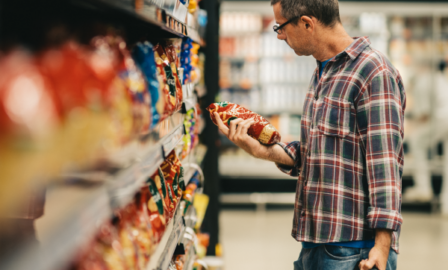A Gloomy Outlook for Sugar-Based Products
This past year, poor weather conditions in the United States Midwest region during the most critical points in the sugar beet production cycle resulted in a 20% sugar shortage in 2020 for sugar-based products, which will remain in effect until this year’s fall harvest season. Heavy precipitation in the spring of 2019 limited the amount of sugar beet that producers could plant, while fall rains halted harvesting machinery in their tracks. Sugar production dropped by 1.1 billion pounds, which will likely cause an acceleration of the typical summer supply tightness. This shortage increased sugar prices, which reached seven-year highs, and has pressured manufacturers to scramble to secure timely shipments.
The USDA and U.S. Department of Commerce took action to alleviate the shortage by allowing Mexican sugar cane imports to increase by 200 million pounds, but this still leaves a large gap to be compensated for, potentially through similar reduced import restrictions for other countries. However, overall global sugar production faces deficits as well, and refineries in the U.S. may not be equipped to process the dramatic increase of imports necessary to make up for losses this season. Though the sugar shortage should not greatly impact retail prices, it may cause food and beverage manufacturers to rethink sugar use in their products – especially considering current consumer trends related to health and concerns for sugar consumption.
Consumers Want Less Sugar-Based Products
In today’s market, consumers purchase fewer soft drinks and goods containing high-fructose corn sweetener or refined sugar. Buyers seek healthier products, which usually contain low amounts of sugar – and 54% of consumers will spend more on food products with no or reduced sugar in order to meet this goal. In past years, growing concern for the health effects of consuming high volumes of sugar led to the development of artificial sweeteners. Yet, 87% of shoppers aim to limit the amount of sugar in their diet, and 60% believe that artificial sweeteners are bad for your health. Combined with the more recent issue of the sugar shortage, these consumer trends indicate that it may be a good time for manufacturers to consider switching to other types of more naturally-based sugar alternatives to achieve the perfect recipe that consumers are searching for.
Sugar Alternatives are Growing
As consumers are becoming uninterested in artificial sweeteners and conventional sugar, food and beverage companies are taking note of the increasing number of sugar alternatives available. Stevia is one popular option with an already well-developed supply chain, and fruit syrups are also growing in usage with date, monk fruit, pomegranate, and coconut reductions increasingly able to be used as substitutes. Two key alternatives have seen a surge in interest: cacao and aroma enhancement.
Cacao
Cacao has recently become a much more appealing ingredient to manufacturers. The fruit meat is naturally sweet with a unique tart flavor, so it can be used as a sugar alternative in food and beverage products. Currently, only 20% of each cacao pod is processed for making chocolate, so if companies can reduce waste by processing every part of the fruit for sweetener, they can also better support sustainability efforts. Cacao is attractive to health-conscious consumers because of its nutritious vitamins and minerals. Food companies such as Mondelez, Barry Callebaut, and Nestlé have started to incorporate cacao fruit-based options into their product lines, selling smoothie balls, fruit jerky strips, and pulp-sweetened chocolate. However, using cacao will require food and beverage companies to accelerate their cacao fruit shipments through the supply chain to preserve freshness and quality.
Aroma Enhancement
Science has proven that consumers’ food and beverage experiences are influenced by aromas, which can positively or negatively affect their purchase decisions. Therefore, the beverage industry has started to use aromas instead of artificial sweeteners to reduce sugar content in flavored drinks. NIZO researched the effectiveness of using an apple-based aroma, ethyl hexanoate, and found that people are not particularly sensitive to the difference between sugar-based products versus aroma-based flavors. Aromas seem to trick consumers’ brains into tasting sugar where there is none, which can help food and beverage goods retain their flavor and perceived standard sweetness while lowering or eliminating the need for a sugar ingredient. Switching from sugar or artificial sweeteners to aromas can lower manufacturing costs, but some aromas may require artificial production, which could cause consumer backlash related to an uptick in label-conscious consumer interest in natural ingredients.
Sugar Alternatives Risk Mitigation
Supply Chain
For food and beverage companies to make the switch to a sugar alternative, aspects of their supply chain need to be reconsidered. Costs may rise, since most natural sugar alternatives are more expensive than sugar. Additionally, sourcing new ingredients may take time and negotiations efforts, and create expensive major changes to storing, handling, and processing systems. For example, cacao pod harvesting is somewhat inefficient in that it is not yet mechanized, and the fruit must be handled carefully over three to seven days post-harvest to optimize flavor and acidity while reducing fruit meat shrinkage from evaporation. However, the challenges of a supply chain change are worth it for companies who can efficiently create a balance between cost and consumer satisfaction with the product, especially moving forward in a market that faces a sugar shortage and consumer interest in low sugar content.
Consumer Preferences
While there is proven opportunity for sugar alternatives in the food and beverage market, there are some concerns about differences in perceived demand compared to actual buying actions of consumers. They often indicate interest in products made with sugar alternatives, but they may not follow through with actually buying those products. This could be caused by noticeable differences in texture and flavor in sugar alternative products, which is an obstacle that can take time and money for companies to test and resolve. Moving to alternatives could also hurt a product’s brand even though consumer preferences for natural and healthy ingredients would indicate otherwise, as seen in a recent Trix failure, when customers did not respond well to the look of their cereal after a shift to using natural coloring. These challenges will require companies to continuously to adjust to consumer preferences, but they are not big enough obstacle to prevent companies from considering a switch to sugar alternatives.
How Sugar-Based Products Producers and Manufacturers Should React
Consumers are becoming increasingly disinterested in conventional sugar, which means that the sugar shortage has provided prime timing for food and beverage manufacturers to increase investment in finding an ideal sugar alternative for their products. To reduce risk, it could be helpful for companies to consider using multiple sugar alternatives together. Combining stevia and monk fruit has been found effective in emphasizing the products’ best qualities while negating any off-flavor of each product.
In deciding how to move forward, companies should consider their supply chain – would a transition to sugar alternatives optimize your processes? How does this sugar shortage affect your suppliers, and therefore your costs? Are your target consumers part of the sugar alternative-seeking market? And, if you are a sugar alternative producer, are you taking advantage of the improving market situations coming from the combination of consumer trends and the tight sugar supply by matching your prices to position yourself as a competitive substitute Innovative companies that act on this market situation may find themselves perfectly positioned to gain a competitive advantage that could last even beyond and the 2020 sugar shortage.
Subscribe to Clarkston's Insights
Contributions by Courtney Loughran.



